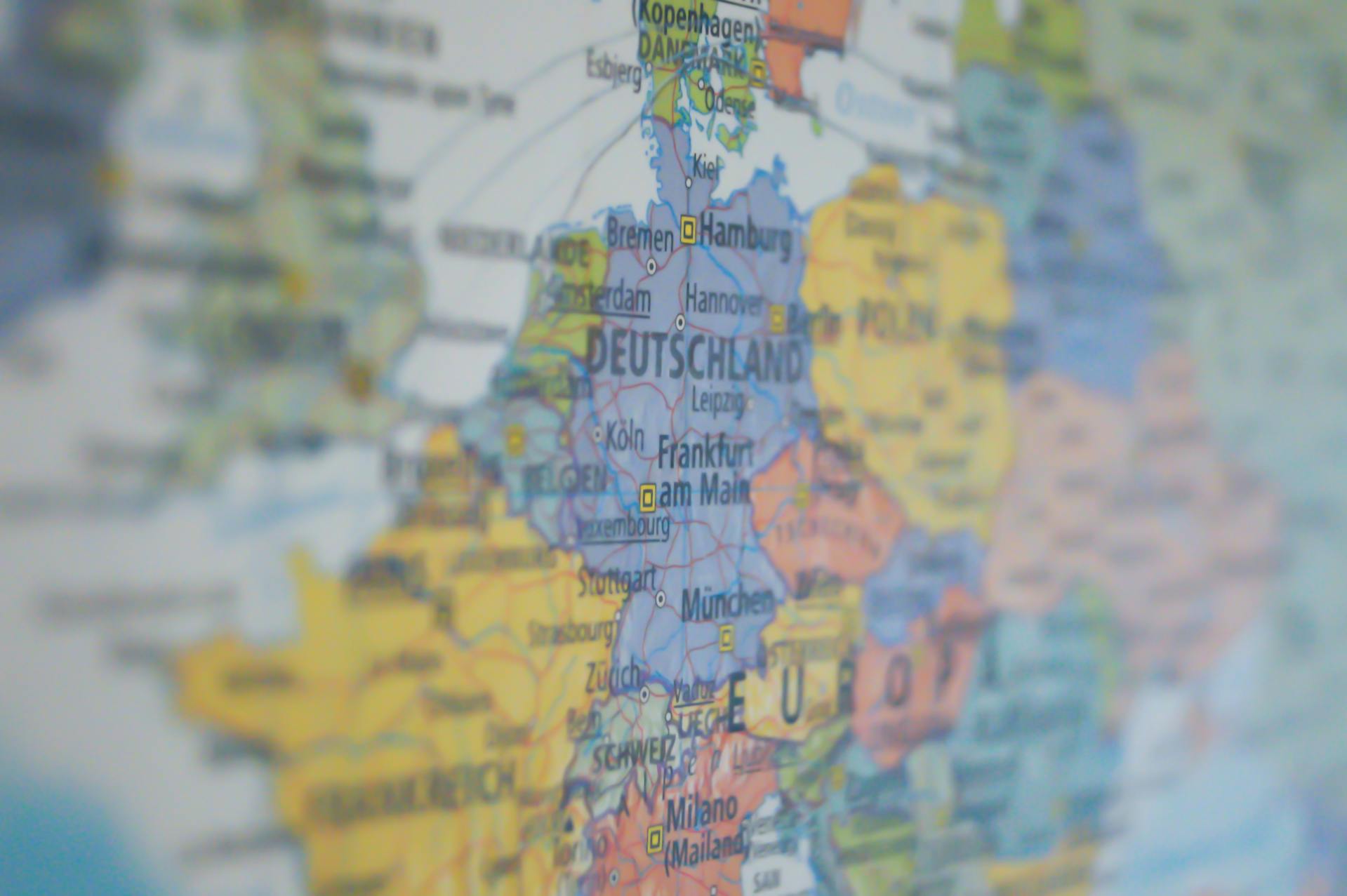Cara terbaik untuk bepergian melintasi Eropa: dengan kereta api atau pesawat?
Mari kita lihat berbagai faktor untuk membantu Anda memutuskan!
Ringkasan
Saat merencanakan perjalanan melintasi beberapa kota di Eropa, Anda sering kali harus membuat keputusan tentang cara terbaik untuk bepergian melintasi kota-kota tersebut. Meskipun ada beberapa moda transportasi yang tersedia, keputusan yang diambil biasanya adalah apakah Anda harus naik kereta api atau naik pesawat. Kedua pilihan tersebut menawarkan keuntungan dan pertimbangan yang berbeda, tetapi mari kita lihat berbagai faktor untuk membantu Anda memutuskan.

Waktu, Kenyamanan, dan Aksesibilitas
Terbang biasanya menawarkan keuntungan berupa kecepatan, terutama untuk jarak jauh. Misalnya, penerbangan dari Paris ke Amsterdam memakan waktu sekitar 1,5 jam, dibandingkan dengan sekitar 3 jam 20 menit dengan kereta api.
Namun, bandara seringkali terletak lebih jauh dari pusat kota, dan berapa pun keuntungan waktu yang Anda hemat dari perjalanan sebenarnya
Namun, keuntungan waktu ini dapat diimbangi dengan waktu yang dihabiskan untuk bepergian ke dan dari bandara, melewati pemeriksaan keamanan, dan menunggu boarding.
Di sisi lain, kereta api sering kali berangkat dari pusat kota, sehingga tidak perlu lagi melakukan perjalanan jauh ke bandara. Kereta api menyediakan proses naik kereta yang mudah tanpa antrean keamanan, sehingga menjadi pilihan yang lebih nyaman untuk jarak yang lebih pendek atau rute yang menghubungkan kota-kota besar.
Biaya
Biaya merupakan faktor penting dalam keputusan bepergian. Eropa memiliki banyak maskapai penerbangan berbiaya rendah yang melayani penerbangan antarkota besar di seluruh wilayah; dan biaya penerbangan seringkali jauh lebih murah daripada jika Anda naik kereta api.
Penting untuk dicatat bahwa meskipun maskapai penerbangan berbiaya rendah mungkin menawarkan harga tiket yang murah, biaya tambahan untuk bagasi, pemilihan tempat duduk, dan fasilitas lainnya dapat bertambah dengan cepat. Anda juga harus memperhitungkan biaya transportasi untuk mencapai bandara dan pusat kota, terutama mengingat bandara biasanya terletak jauh dari pusat kota.
Sebaliknya, tiket kereta api di Eropa bisa mahal, terutama untuk perjalanan jarak jauh dan berkecepatan tinggi. Namun, sering kali tersedia diskon untuk pemesanan awal atau dengan tiket kereta api, yang membuat perjalanan kereta api lebih ekonomis, terutama bagi pelancong yang fleksibel atau mereka yang berencana mengunjungi beberapa destinasi. Stasiun kereta api yang berada di pusat kota juga dapat mengurangi biaya transportasi Anda secara keseluruhan karena akan lebih murah bagi Anda untuk sampai ke hotel setelah tiba.
Bandingkan total biaya transportasi untuk seluruh durasi perjalanan Anda untuk mengetahui apakah tiket kereta api Anda bisa lebih ekonomis daripada terbang beberapa kali.
Kenyamanan dan Pengalaman
Dalam hal kenyamanan, kereta api umumnya jauh lebih nyaman daripada pesawat - terutama jika Anda membandingkan pengalaman naik kereta api dengan pengalaman di maskapai penerbangan berbiaya rendah.
Jika Anda bersedia membayar sedikit lebih mahal untuk maskapai berbiaya penuh dan kursi kelas bisnis, Anda mungkin akan mendapatkan penerbangan yang jauh lebih nyaman, tetapi berapa biayanya?
Dibandingkan dengan kursi pesawat yang ruang kakinya seringkali sangat terbatas, kereta api di Eropa seringkali dilengkapi dengan kursi yang luas dan ruang kaki yang cukup, sehingga meningkatkan kenyamanan perjalanan Anda secara keseluruhan. Fasilitas tambahan seperti tempat makan dan WiFi di dalam kabin juga jauh lebih terjangkau di kereta api daripada di
Dan untuk menambah kenyamanan, naik kereta juga memungkinkan Anda menikmati pemandangan indah sepanjang perjalanan!
Dampak Lingkungan
Dengan meningkatnya kesadaran terhadap masalah lingkungan dan perjalanan berkelanjutan, dampak lingkungan dan jejak karbon Anda saat bepergian mungkin menjadi sesuatu yang perlu Anda pertimbangkan.
Kereta api pada umumnya lebih ramah lingkungan daripada pesawat terbang, karena menghasilkan lebih sedikit gas rumah kaca per mil penumpang. Sementara pesawat terbang yang lebih baru menjadi semakin hemat bahan bakar dan industri penerbangan secara keseluruhan berupaya untuk meningkatkan efisiensi bahan bakar dan perjalanan yang ramah lingkungan, tingkat emisi karbonnya masih jauh lebih tinggi daripada kereta api.
Dapatkan eSIM Nomad untuk perjalanan Anda berikutnya ke Eropa
Baik Anda naik kereta api atau terbang melintasi berbagai negara Eropa, tetap terhubung selama bepergian sangatlah penting.
Salah satu cara terbaik untuk tetap terhubung di Eropa adalah dengan mendapatkan**Nomad Travel eSIM untuk Eropa**. ****eSIM perjalanan Nomad untuk Eropa memiliki jangkauan di lebih dari 35 tujuan utama di Eropa, yang memberi Anda koneksi data yang baik saat Anda menjelajahi benua tersebut. Tersedia berbagai paket data, mulai dari 1GB - 20GB, dengan biaya serendah $1,30/GB.
Jika Anda hanya akan bepergian ke Italia, Jerman, dan Prancis, Nomad juga menawarkan paket yang lebih kecilrencana regional untuk Italia, Jerman, dan PrancisMeskipun paket ini tidak mencakup banyak negara seperti eSIM perjalanan untuk Eropa, paket ini bisa menjadi pilihan yang lebih hemat biaya jika perjalanan Anda hanya mencakup destinasi ini.
Jaringan yang digunakan eSIM Nomad untuk setiap paket tertera pada detail paket di toko web dan aplikasi, sehingga Anda dapat memeriksa jaringan mana yang didukung sebelum membeli paket. Berbagi data dan penambatan juga didukung pada paket eSIM Nomad.